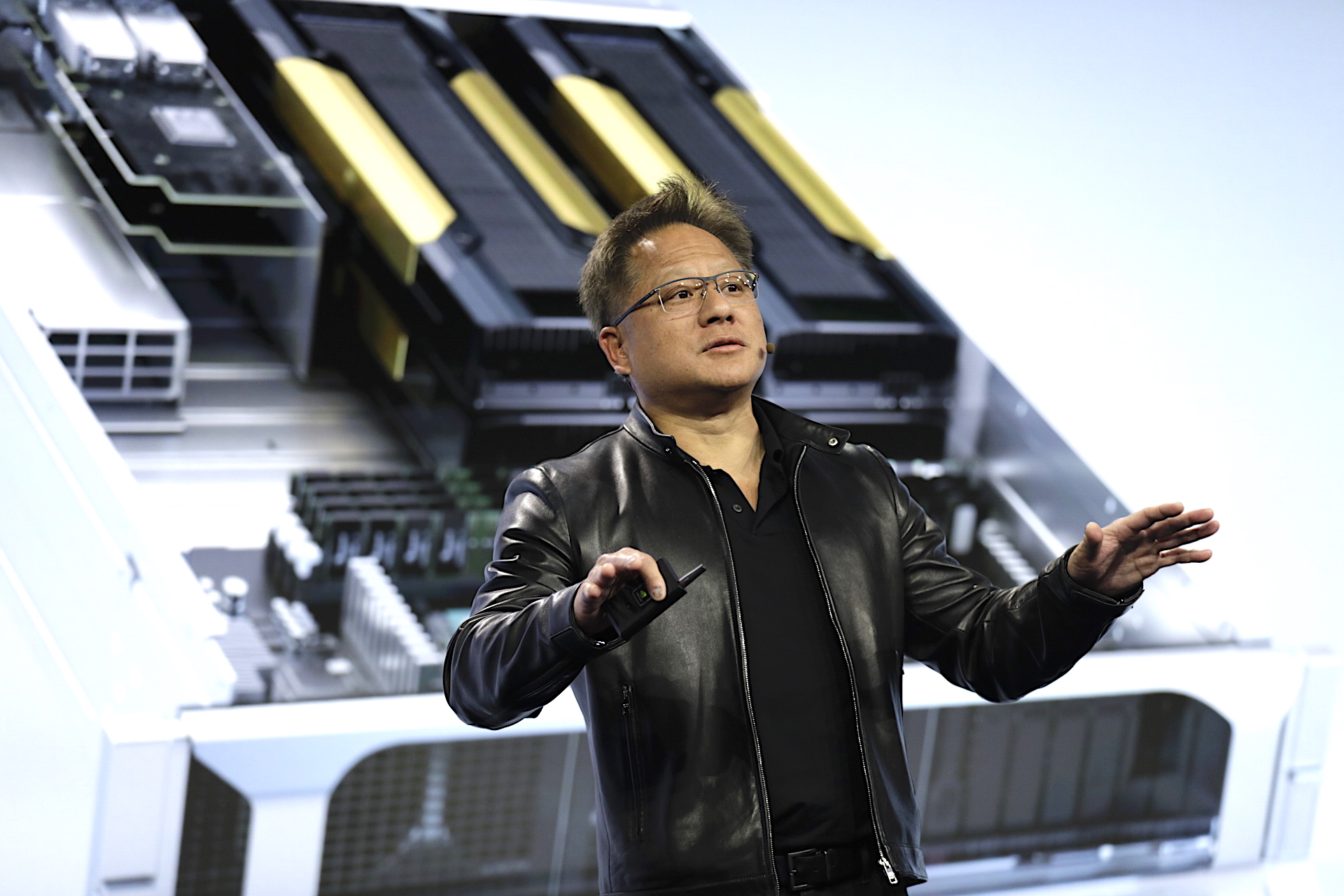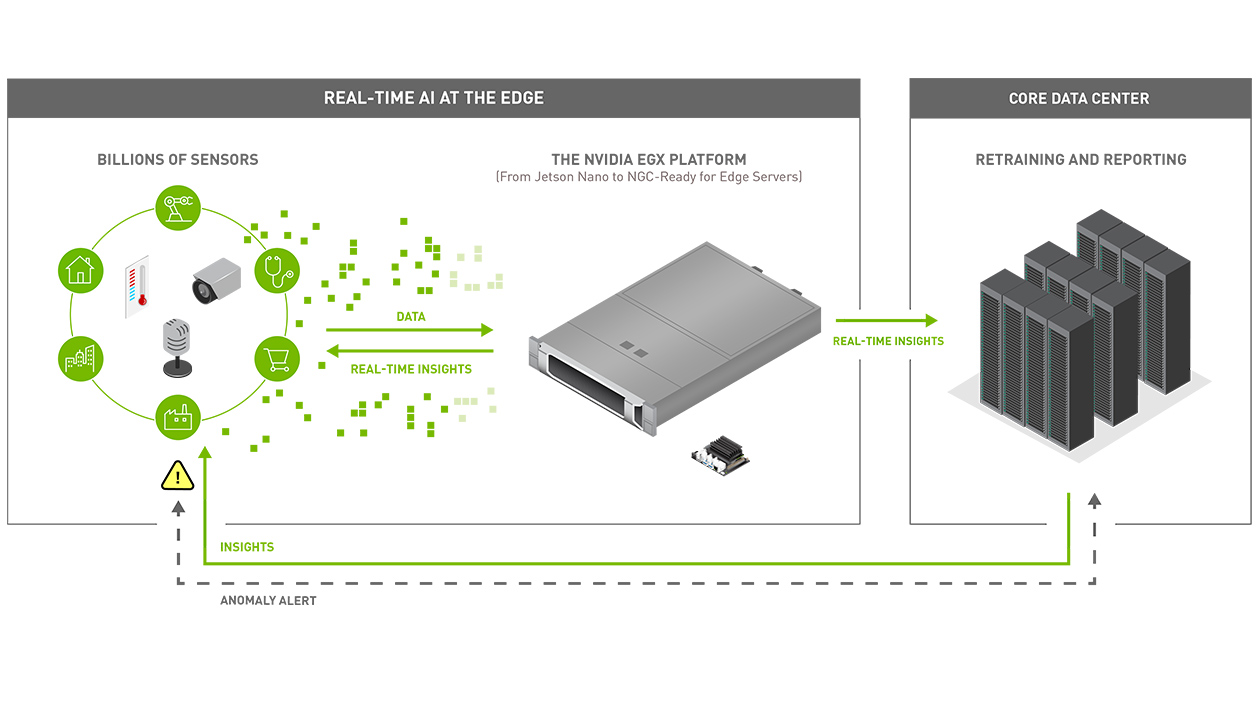 INFRA
INFRA
 INFRA
INFRA
 INFRA
INFRA
Nvidia Corp. took to the stage at the Mobile World Congress in Los Angeles late Monday to announce availability of its new EGX Edge Supercomputing Platform that’s all about harnessing so-called “edge data” for artificial intelligence purposes.
Nvidia founder and Chief Executive Jensen Huang (pictured) said EGX would enable companies to harness rapidly streaming data from factory floors or city streets to deliver “next-generation AI, Internet of Things and 5G-based services” at scale and with lower latency.
“We’ve entered a new era, where billions of always-on IoT sensors will be connected by 5G and processed by AI,” Huang said in a statement. “Its foundation requires a new class of highly secure, networked computers operated with ease from far away. We’ve created the Nvidia EGX Edge Supercomputing Platform for this world, where computing moves beyond personal and beyond the cloud to operate at planetary scale.”
Enabling AI to run on edge devices such as smartphones, sensors and factory machines is the next step in the technology’s evolutionary progress. It wasn’t possible before as the earliest AI algorithms were so complex that they could be processed only on powerful machines running in cloud data centers, and that requires sending lots of information across the network. But that’s undesirable because it requires lots of bandwidth and results in higher latencies, which makes “real-time” AI something less than that.
What companies really want is AI to be performed where the data itself is created, be it at manufacturing facilities, retail stores or warehouses. That’s what Nvidia EGX is designed to do. It combines Nvidia’s AI technologies with security, storage and networking technologies from Mellanox Technologies Ltd., a data center networking company Nvidia has previously said it intends to acquire by the end of the year for $6.9 billion.
The EGX platform runs the Nvidia Edge Stack, which is a software stack that’s been optimized for real-time AI services such as analytics, speech and vision. The platform also combines Nvidia’s CUDA-X software, a collection of libraries, tools and technologies for AI, with Nvidia-certified graphics processing unit servers. It also supports Nvidia Metropolis, which is a framework for building smart cities and intelligent video analytics applications.
“The battle for AI workloads is no longer decided in the cloud, but now on the edge platforms that increasingly run them,” said Holger Mueller, principal analyst and vice president of Constellation Research Inc. “Data transfer times and costs are simply prohibitive for enterprises and so edge platforms are being created with an AI component in them. And when you mention AI, of course Nvidia wants to play and that’s what it’s doing with its EGX platform.”

One company that has already put Nvidia EGX to good use is BMW. The German automaker is using EGX to gather data from multiple cameras and sensors from inspection lines at its South Carolina manufacturing facility to enable what it says is “intelligent video analytics.”
The city of Los Angeles is another early adopter of Nvidia’s platform, using EGX to capture vehicle and pedestrian data to autonomously manage signal timing on its streets.
“As 5G and the IoT create more data at the edge, it’s more efficient to process that data closer to its creation,” said Patrick Moorhead of Moor Insights & Strategy. “Edge computing provides that, but for many workloads, more acceleration is required. Nvidia’s EGX is a GPU-accelerated platform that’s best suited for those edge workloads.”
Another key aspect of the EGX platform is the new Nvidia Aerial software development kit announced today. Huang said in his keynote Nvidia Aerial is a critical element for 5G providers as it will enable them to use EGX to build and deliver “high-performance, software-defined 5G wireless radio access networks” through two advancements. These include a low-latency data path from Mellanox network interface cards to GPU memory and a 5G physical layer signal-processing engine that ensures all data is kept within the GPU’s memory.
With Nvidia Aerial, telecommunications companies will be able to build completely virtualized 5G RANs to support use cases such as augmented and virtual reality, cloud gaming and smart factories, Huang said.
Nvidia has already partnered with Swedish networking company Telefonaktiebolaget LM Ericsson to build the world’s first software-defined 5G RAN. The companies are now looking to commercialize the technology, they said.
“With Nvidia we will jointly look at bringing alternatives to market for virtualizing the complete radio access network,” said Fredrik Jejdling, executive vice president and head of networks at Ericsson.
Nvidia also announced expanded partnerships with Red Hat Inc. and Microsoft Corp.
With regard to the first, Nvidia said it’s delivering high-performance, software-defined 5G wireless infrastructure running on the Red Hat OpenShift platform to telecommunications companies. The idea is to make AI-enabled applications more accessible at the telco edge, Huang said.
Meanwhile, Nvidia said the EGX platform is being closely integrated with Microsoft’s Azure cloud to provide more advanced “edge-to-cloud AI computing capabilities.” The companies will focus on intelligent edge computing that helps organizations in various industries better manage and gain insights from data created at retail stores, warehouses, manufacturing facilities, connected buildings and urban infrastructure, for example.
“The world’s largest industries want to have AI computing at the edge, to extract insight from continuous streams of data, and to sense, reason and act at the point of action,” Huang said.
THANK YOU